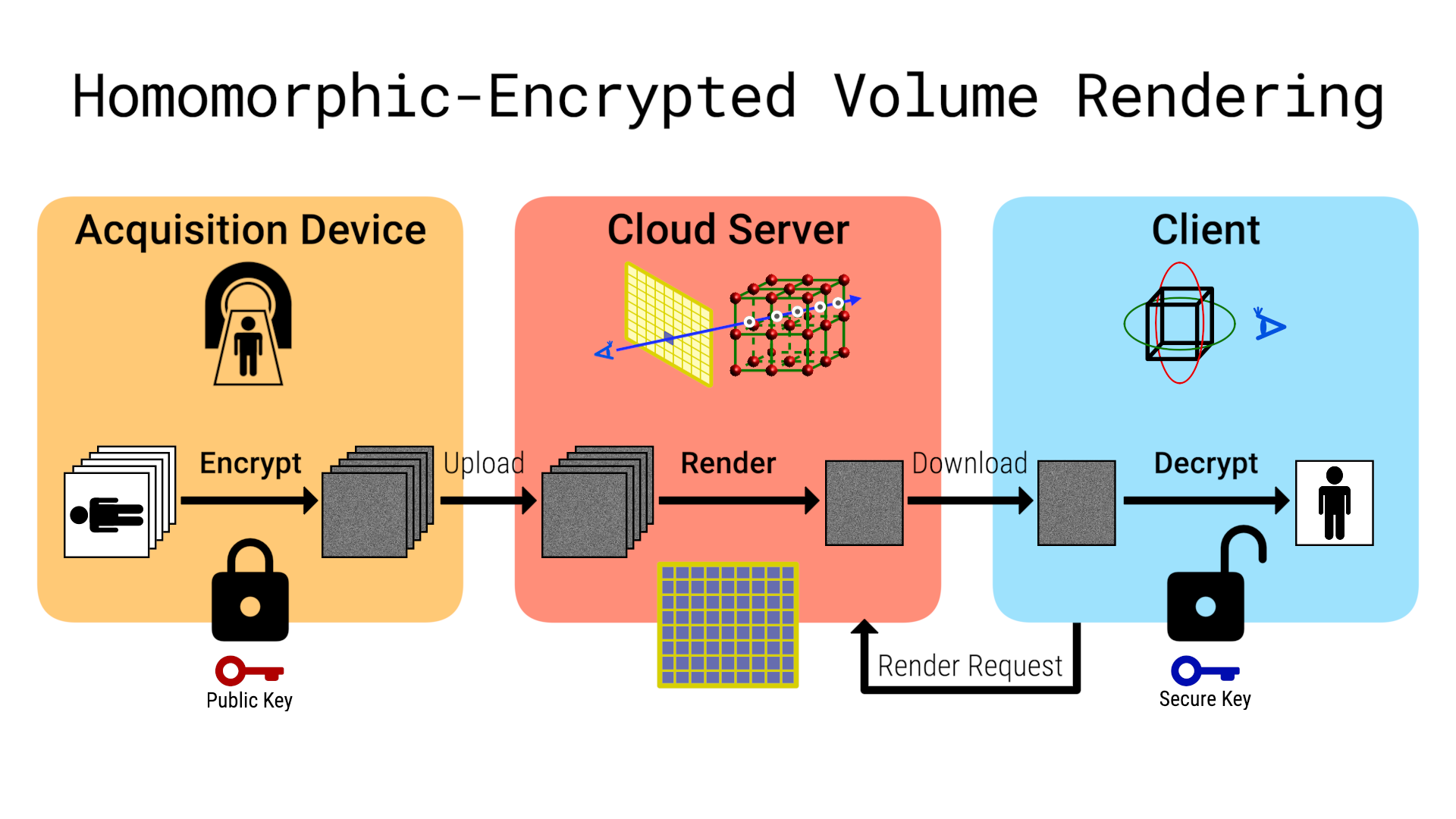Homomorphic-Encrypted Volume Rendering
Sebastian Mazza, Daniel Patel, Ivan Viola
External link (DOI)
View presentation:2020-10-30T17:00:00ZGMT-0600Change your timezone on the schedule page
2020-10-30T17:00:00Z

Fast forward
Direct link to video on YouTube: https://youtu.be/v0eO7uXGzG4
Keywords
Volume Rendering, Transfer Function, Homomorphic-Encryption, Paillier
Abstract
Computationally-demanding tasks are typically calculated in dedicated data centers and real-time visualizations follow this trend as well. Some rendering tasks, however, require highest-level of confidentiality so that no other party, besides the owner, can read or see the sensitive data. We present a direct volume rendering approach that performs volume rendering directly on encrypted volume data by using the homomorphic Paillier encryption algorithm. This keeps the volume data and rendered image uninterpretable for the rendering server. Our volume rendering pipeline introduces novel approaches for encrypted-data compositing, interpolation, opacity modulation as well as simple transfer function design, where each of these routines maintains the highest-level of privacy. We present performance and memory overhead analysis that is associated with our privacy-preserving scheme. Our approach is open and secure by design as opposed to secure through obscurity. The owner of the data only has to keep her secure key confidential to guarantee the privacy of her volume data and the rendered images. Our work is to our knowledge the first privacy-preserving remote volume-rendering approach which does not require trusting any involved server, even in case the server is compromised, no sensitive data will be leaked to a foreign party.